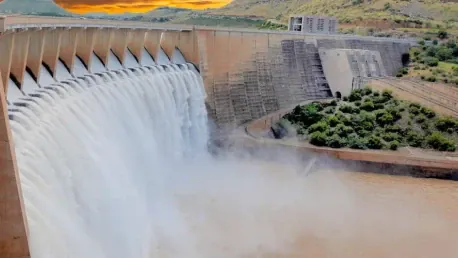Aiming to generate an astounding 44,000 megawatts of electricity, the Grand Inga Dam project in the Democratic Republic of Congo (DRC) is set to become Africa’s largest hydropower initiative. Valued at a staggering $80 billion, this ambitious project seeks to transform the energy supply across the continent. The Grand Inga Dam project involves constructing six new hydropower stations alongside two existing facilities. It has entered a crucial phase of funding discussions with international financial institutions, aspiring to realize its potential as a beacon of clean energy.
Previous attempts to develop the dam stumbled due to transparency issues, but renewed negotiations under the current leadership offer renewed hope. Despite its significant potential, the project has drawn criticism for seemingly prioritizing the mining sector, particularly the Katanga mining region, over broader public access. Countries like South Africa and Nigeria are showing interest in importing power, though concerns remain about whether the electricity will be affordable for Congo’s impoverished population.
Supporters of the Grand Inga Dam argue that while mining companies appear to be prioritized due to their substantial investment commitments, no exclusive power allocation exists. They suggest that achieving broader access to electricity is still a feasible goal. The project has garnered attention from the business community, especially participants in recent international forums, who view it as essential for generating clean energy despite its enormous scale and the expected decade-long completion timeframe.
Overall, the Grand Inga Dam project presents a pivotal opportunity to address regional energy deficits but underscores the challenge of balancing industrial development with public electricity needs. The initiative remains a landmark venture in clean energy, reflecting the complex interplay between economic interests and public welfare. As funding discussions progress, the project could mark a significant step forward in meeting Africa’s energy demands while promoting sustainable development.









